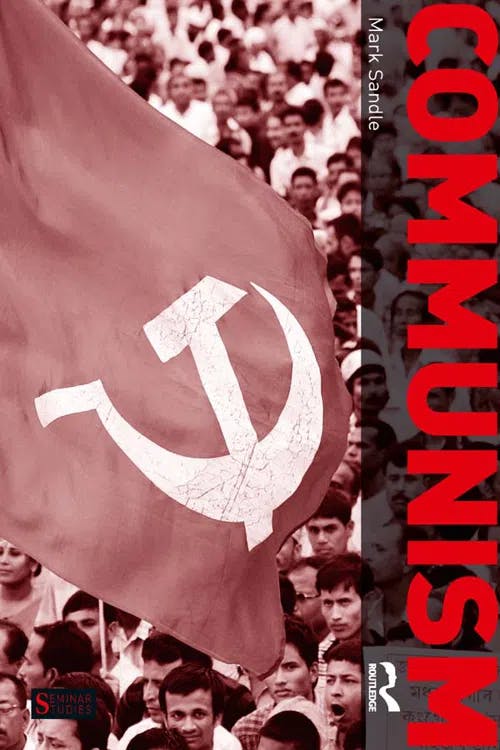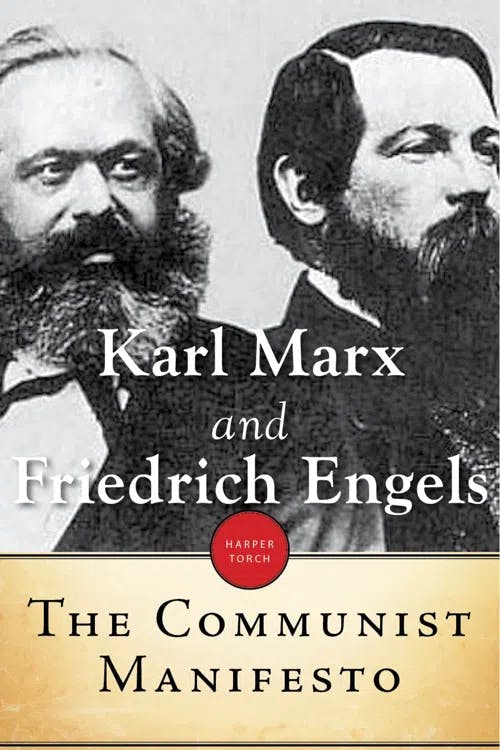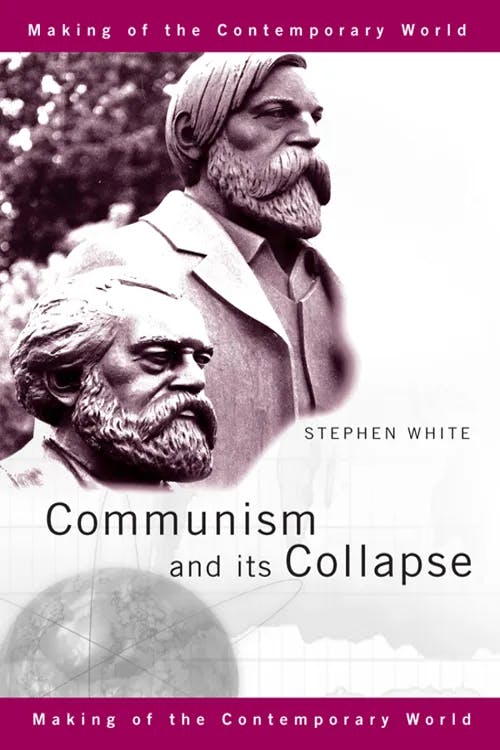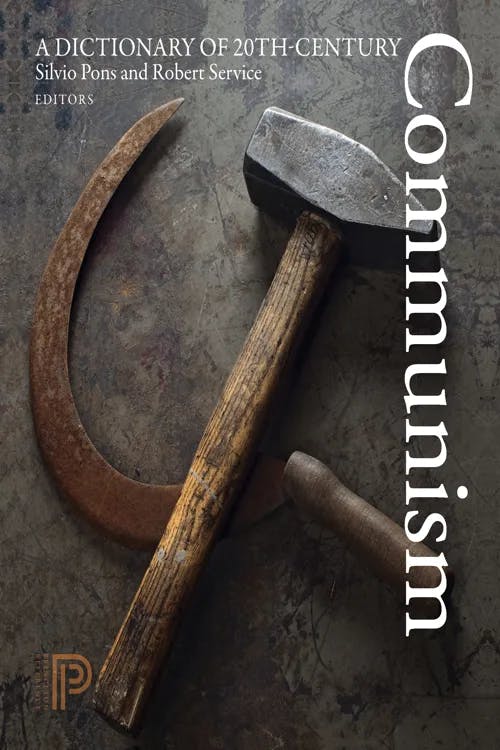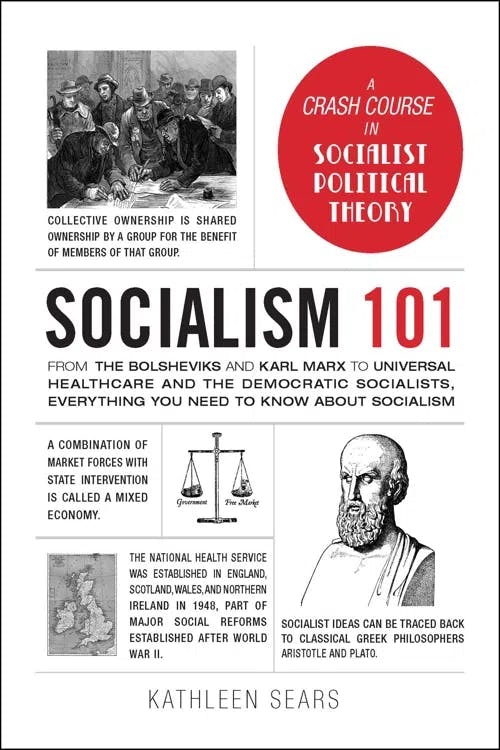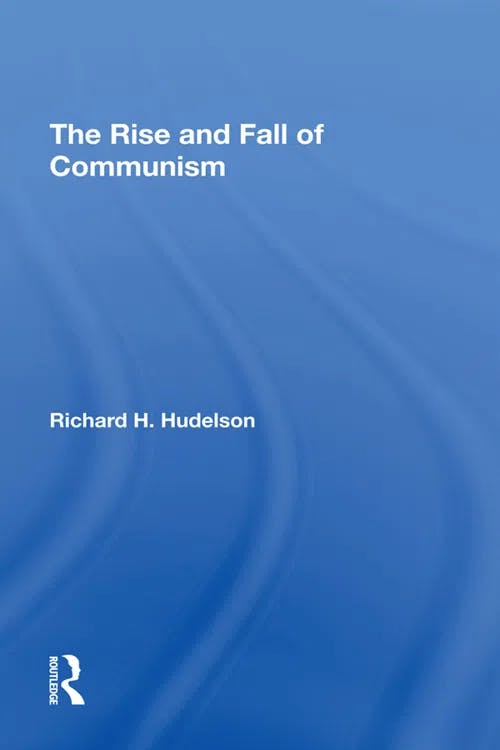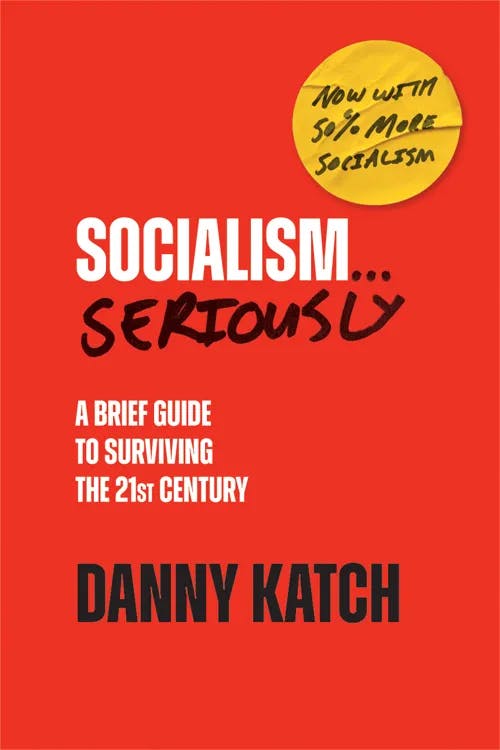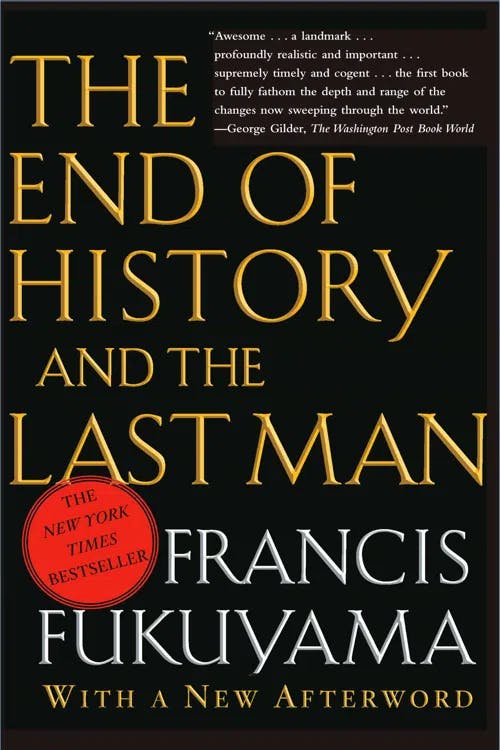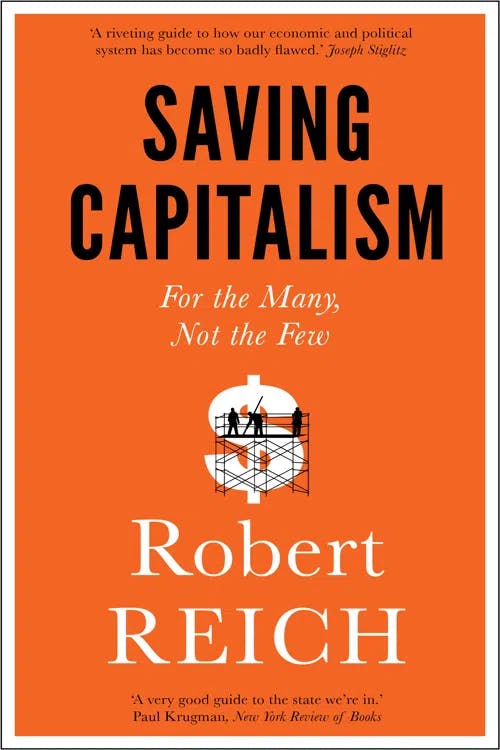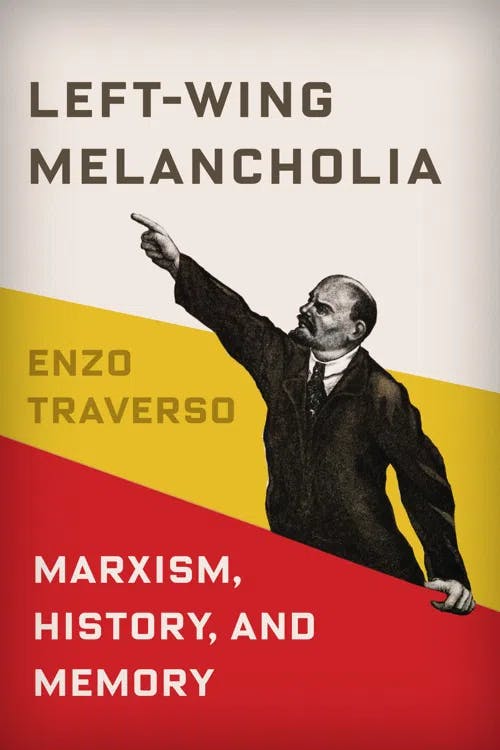What is Communism?
MA, English Literature (University College London)
Date Published: 07.06.2023,
Last Updated: 02.04.2024
Share this article
Defining communism
Communism is a term that has meant different things, to different people, at different times. It has a varied and controversial history, and in modern discussions the term is dominated by its association with such oppressive regimes as Joseph Stalin’s Soviet Union and Mao Zedong’s China.
Out of this tangled jungle, however, it is still possible to carve out a working definition for what communism — as an ideology — means in general. In a basic sense, communism refers to a far-left political and economic system in which assets, resources, and the means of production are under common ownership. Under communism, people would not be separated into different classes, and there would be no private property or money. In Communism (2014), Mark Sandle outlines some of the “features and values” that can be identified with communism:
- a social system based on harmony, equality and co-operation;
- a collectivist or communal ethos or public morality;
- a socio-economic system based on holding property in common;
- the aspiration for a society which transcends individualism, competition, rivalry and selfishness;
- a utopian longing for a perfect society which liberates humanity from its various forms of oppression. (2014)
Mark Sandle
- a social system based on harmony, equality and co-operation;
- a collectivist or communal ethos or public morality;
- a socio-economic system based on holding property in common;
- the aspiration for a society which transcends individualism, competition, rivalry and selfishness;
- a utopian longing for a perfect society which liberates humanity from its various forms of oppression. (2014)
Our modern understanding of communism is deeply linked to the work of Karl Marx (1818–1883) and Friedrich Engels (1820–1895), who argue that capitalist societies are inherently exploitative and that the ruling “bourgeoisie” (capitalist class) should be violently overthrown by the oppressed “proletariat” (working class). But before we unpack the theory of communism in greater detail, let’s take a look at its origins.
The origins of communism
Human societies have had collectivist characteristics from the very beginning. As Sandle points out,
Communism and communalist ideas have a long historical pedigree. The aspiration to create a society based on equality, harmony, fraternity and co-operation has found expression in many different cultures and contexts. (2014)
This means that — technically — there are many precursors to communism, and that the very earliest cases may be lost in the distant fog of unrecorded history.
Sandle goes on to provide an insightful overview of early communist thought. Some of the examples picked out include the Essenic communities in the Middle East, who “held their property in common” as early as the second century BCE, as well as early Christians in the first century BCE who advocated “the sharing of wealth and possessions and the abolition of poverty amongst their brethren” (2014). The underlying principles of Christianity, indeed, have influenced communist and socialist thought throughout history.
As we advance through to the early modern period of history, Sandle highlights how
the Renaissance produced a proliferation of speculative utopian philosophising. A variety of philosophers and commentators – including Thomas More, Tommaso Campanella, François Rabelais, James Harrington, Francesco Patrizi and others – produced an array of different good societies, common to which were notions of communal property, egalitarianism and co-operative living and working. (2014)
Peasant revolts (such as the “Peasants’ Rebellion in Germany 1525” led by Thomas Münzer) were also highly significant moments in this period, as they “turned to the Bible for an alternative way of living, and to endorse their critique of the existing elites and the distribution of land and power” (Sandle, 2014).
With the Enlightenment that followed, philosophers began to consider questions of human rights and equality in earnest — opening the door even further to communist thought. But it was with the coming of the Industrial Revolution, the growth of capitalism, and the concomitant abusive practices of employers, that communism as we know it today really took its shape.
The influence of Karl Marx and Friedrich Engels
Karl Marx (1818–1883) and Friedrich Engels (1820–1895) are arguably the most important contributors to our modern understanding of communism. With The Communist Manifesto (1848), they formulated a seismically influential vision of communist society. Marx notably built upon this with Das Kapital (1867–94), which analyzes (and attacks) the inner workings of capitalism in great detail.
When approaching Marxist thinking, it is helpful to start with Marx’s understanding of dialectical and historical materialism: Marx viewed history, and the capitalist society he saw around him, as the result of a prolonged struggle between the working class and their capitalist rulers. For Marx and Engels, capitalism is inherently exploitative: capitalists effectively own their workers’ labor, and this labor produces more value than the workers’ are actually compensated for in their wages. In Das Kapital (1867–94 [2012]), Marx explains that this is “surplus value” — profits which are unfairly taken from the workers by their capitalists rulers. To put it another way, Marx and Engels believe that workers should own the “means of production” (1848 [2014]), as only then will they benefit from the full value of their labor. Marx and Engels argue that workers must rise up to claim their freedom in the form of a communist revolution:
The Communists disdain to conceal their views and aims. They openly declare that their ends can be attained only by the forcible overthrow of all existing social conditions. Let the ruling classes tremble at a Communistic revolution. The proletarians have nothing to lose but their chains. They have a world to win. (1848 [2014])
Karl Marx and Friedrich Engels
The Communists disdain to conceal their views and aims. They openly declare that their ends can be attained only by the forcible overthrow of all existing social conditions. Let the ruling classes tremble at a Communistic revolution. The proletarians have nothing to lose but their chains. They have a world to win. (1848 [2014])
This revolutionary aspect of communism’s ideology, with all its violent implications, has been the focus of particularly robust criticism. As we explore in our companion guide “What is Socialism?”, this revolutionary aspect is also one of the key differences between communism and socialism — with socialism now understood as a non-violent ideology that is compatible with existing forms of democracy.
But what is the communist “world” that Marx and Engels hope to “win” with such a revolution? Great Thinkers (2020), edited by Alain de Botton, provides a helpfully concise outline of the communist vision:
The Communist Manifesto describes a world without private property, without any inherited wealth, with a steeply graduated income tax, centralised control of the banking, communication, and transport industries, and free public education for all children. (2020)
Edited by Alain de Botton
The Communist Manifesto describes a world without private property, without any inherited wealth, with a steeply graduated income tax, centralised control of the banking, communication, and transport industries, and free public education for all children. (2020)
In Marx and Engel’s view, the redistribution of wealth and resources throughout communist society would make such a vision possible. Instead of being concentrated in the hands of a few capitalists, resources would be more equally distributed to meet the needs of everyone in society. As Sandle explains,
Developments in technology and production would enable scarcity to be abolished, and this was the crucial factor enabling the strife and exploitation of capitalism to be transcended. The final outcome of history was a society free from alienation, in which the individual realises him/herself fully, and becomes truly human for the first time. (2014)
In this envisioned communist society, “[r]emoving the basis for exploitation, and overcoming alienation would facilitate the emergence of a society of harmony, unity and voluntary co-operation” (Sandle, 2014). This is the theory, at least — in the next section we will take a look at the main examples of communist states in practice. Marxism was foundational in their development, and you can explore Marxist thinking in greater depth with our “What is Marxism?” study guide.
Communist states
The Soviet Union (1922–1991)
The Russian Revolution from 1917 onwards, and the creation of the communist Soviet Union that would follow, is a defining period in the history of communism and the twentieth century as a whole. Led by Vladimir Lenin (1870–1924) and the Bolsheviks, the guiding philosophy of the Soviet Union would become known as Marxism–Leninism and inspire communist parties around the world. As Stephen White explains in Communism and its Collapse (2002),
for more than seventy years, latterly in association with a group of states in Eastern Europe and Asia, it was governed on the basis of Marx’s belief that human labour was the only source of wealth, that productive resources should be owned by the people as a whole, and that the working class in capitalist as well as socialist countries would recognise their common interest in a form of shared ownership that would eventually extend across state boundaries.
Stephen White
for more than seventy years, latterly in association with a group of states in Eastern Europe and Asia, it was governed on the basis of Marx’s belief that human labour was the only source of wealth, that productive resources should be owned by the people as a whole, and that the working class in capitalist as well as socialist countries would recognise their common interest in a form of shared ownership that would eventually extend across state boundaries.
The Soviet Union was a one-party dictatorship, and its record under Joseph Stalin (1878–1953) has drawn particularly widespread condemnation. Under Stalin’s oppressive regime of terror, opposition was purged and millions of people suffered and died in Gulag labor camps. The Gulag Archipelago (1973), by Aleksandr Solzhenitsyn, has had a huge impact since its publication due to its searing accounts of life in these conditions. Stalin’s “collectivization of agriculture”, furthermore, led to famines in which “[m]illions died of starvation” (Richard H. Hudelson, The Rise And Fall Of Communism, 2019).
In A Dictionary of 20th-Century Communism (2022), Silvio Pons and Robert Service explain that
[Stalinism] was based on dictatorship as well as the social and political violence that Bolshevism had experimented with, taking the use of terror as a tool of government to extremes.
Edited by Silvio Pons and Robert Service
[Stalinism] was based on dictatorship as well as the social and political violence that Bolshevism had experimented with, taking the use of terror as a tool of government to extremes.
With this in mind, there is intense debate over how much the ideology of communism itself should be blamed for the Soviet Union’s crimes. As we will explore further below, some scholars argue that the Soviet Union is not an example of “communism” in the Marxist sense at all due to its oppressive and elitist nature.
By the time of the Soviet Union’s fall in 1991, however, its brand of communism had further developed. As Pons and Service write,
In many respects, the banner of reform communism was to be picked up by Gorbachev and carried to its extreme. On the eve of his exit he had virtually emptied communism of its Leninist components. (2022)
To read more about the Soviet Union, Geoffrey Hosking’s A History of the Soviet Union (2017) provides comprehensive coverage.
Other communist states
After the end of the Second World War, the Soviet bloc expanded into Eastern Europe. As Kathleen Sears writes in Socialism 101 (2019),
These governments followed the Soviet pattern of a single-party system: substantial state ownership of the economy, adherence to an official ideology based on Marxism, and the maintenance of power through nondemocratic means.
Kathleen Sears
These governments followed the Soviet pattern of a single-party system: substantial state ownership of the economy, adherence to an official ideology based on Marxism, and the maintenance of power through nondemocratic means.
The twentieth century would see the creation of numerous other communist states which were modeled on the dominant Soviet Union model, with the most notable example being the People’s Republic of China (PRC) in 1949. First led by Mao Zedong (1893–1976), the PRC is a communist state which survives to this day. Just as it was influenced by the Soviet Union, the Chinese revolution, in turn,
provided a model that [...] strongly influenced similar revolutionary movements in other countries. In Indonesia and Vietnam, for example, strong Communist movements were developed that shared with the Chinese example their Communist leadership, peasant base, and antiimperialist orientation. (Hudelson, 2019)
Richard H. Hudelson
provided a model that [...] strongly influenced similar revolutionary movements in other countries. In Indonesia and Vietnam, for example, strong Communist movements were developed that shared with the Chinese example their Communist leadership, peasant base, and antiimperialist orientation. (Hudelson, 2019)
Like Stalinism, Maoism has been the subject of intense criticism for its oppressive actions and tragic consequences. To read more about this period of Chinese history, Andrew G. Walder’s China Under Mao: A Revolution Derailed (2015) is an insightful account.
Communism’s identity crisis
Debates about communism abound, with various disagreements over its relationship with Marxism, Leninism, Marxism–Leninism, Stalinism, Maoism, Eurocommunism, socialism, anarchist communism, and even more “isms”. Marxism–Leninism was the dominant form of communism in the twentieth century, and — despite its disputed faithfulness to the ideology — this is what the term “communism” often refers to. As its name suggests, the origins of Marxism–Leninism lie with the Bolsheviks’ interpretation of Marx — with Stalinism and Maoism often being seen as offshoots of this core ideology.
Marxism–Leninism, Stalinism, and Maoism have been heavily criticized for their oppressive nature and the totalitarian reigns of terror they are associated with. Some of the most serious criticisms of communism hinge upon how closely the ideology itself is associated with the horrific crimes and records of these ostensibly communist regimes. The task of separating communism as an ideology from extreme regimes such as these (if such a task is warranted) is made more difficult by the fact that there are still apologists for Stalin and Mao today, particularly in Russia and China.
Many Marxist critics, however, do separate communism as an ideology from such regimes. They argue that these are examples of authoritarian state capitalism, and not an example of communism at all. It is argued that the leaders of these regimes became a new bourgeoisie of dictatorial capitalists, ruling over the working class who communism was meant to liberate. Pons and Service (2019) highlight Leon Trotsky, Milovan Djilas, and Tony Cliff as proponents of this school of thought.
In Socialism . . . Seriously (2023), for example, Danny Katch argues that
neither “communist” dictatorships nor the limited reforms of “socialist” elected governments have succeeded in creating the liberated democratic societies that Marx and Engels described in the Manifesto.
Danny Katch
neither “communist” dictatorships nor the limited reforms of “socialist” elected governments have succeeded in creating the liberated democratic societies that Marx and Engels described in the Manifesto.
Such debates over the legacy of communism’s ideology lead us to assess its presence in today’s world.
Communism now and in the future
What does communism look like now, in the twenty-first century? Pons and Service provide the following useful summary:
Today only a few countries still adhere faithfully to Communist ideology: China, Vietnam, Cuba, and North Korea. Notwithstanding their proclamations of Marxist orthodoxy, China’s evolution points to a different reality: unrestrained capitalist development. Vietnam has taken the same path. Even Cuba has opened its economy to a restricted number of foreign enterprises. North Korea remains as the lone, irreducible custodian of the Communist past. (2022)
This is not the full picture, of course, as Communist parties still exist in other countries, but (as Pons and Service point out) these parties have “mostly been shaken” by the dissolution of the USSR and no longer possess the “supranational dimension” and Soviet funding that they relied on (2022).
The global hegemony of liberal democracy after the dissolution of the USSR has led thinkers such as Francis Fukuyama to proclaim that liberal democracy represents the final stage of history. In The End of History and the Last Man (2006), Fukuyama writes,
The most remarkable development of the last quarter of the twentieth century has been the revelation of enormous weaknesses at the core of the world’s seemingly strong dictatorships, whether they be of the military-authoritarian Right, or the communist-totalitarian Left. From Latin America to Eastern Europe, from the Soviet Union to the Middle East and Asia, strong governments have been failing over the last two decades. And while they have not given way in all cases to stable liberal democracies, liberal democracy remains the only coherent political aspiration that spans different regions and cultures around the globe. (2006)
Francis Fukuyama
The most remarkable development of the last quarter of the twentieth century has been the revelation of enormous weaknesses at the core of the world’s seemingly strong dictatorships, whether they be of the military-authoritarian Right, or the communist-totalitarian Left. From Latin America to Eastern Europe, from the Soviet Union to the Middle East and Asia, strong governments have been failing over the last two decades. And while they have not given way in all cases to stable liberal democracies, liberal democracy remains the only coherent political aspiration that spans different regions and cultures around the globe. (2006)
Fukuyama’s argument, and the wider theory of uniform history it belongs to, has many critics. It has been argued, for example, that this is quite a simplistic view of history — that instead of following a neat path, history is actually more chaotic, and progress less assured. The dominance of capitalism in Russia and China, and the undemocratic nature of these counties, could also be held up as a counterpoint to the view of a liberal democratic world order in which capitalism and democracy go hand in hand.
Other critics have highlighted the inequality and suffering that is present within the present capitalist model of liberal democracies, and the threat this poses to democracy. Robert Reich, for example, argues that
There is simply no way the American economy can be sustained if the richest 10 percent continue to reap all the economic gains while the poorest 90 percent grow poorer; there is no way American democracy can be maintained if the voices of the vast majority continue to be ignored. (2016)
Robert Reich
There is simply no way the American economy can be sustained if the richest 10 percent continue to reap all the economic gains while the poorest 90 percent grow poorer; there is no way American democracy can be maintained if the voices of the vast majority continue to be ignored. (2016)
In Communism and its Collapse (2002), Stephen White argues that some of the new liberal democracies that arose in Latin America and Eastern Europe only “outwardly observed” the forms of democracy — when, in reality,
parliaments were weak, drug barons were in government and not in prison, armies were more important actors than political parties, and the poverty of ordinary people coexisted with the ostentatious wealth of a small minority.
In a wider sense, many commentators have identified inherent problems in the present capitalist system as a reason for communism’s continued relevance. With persistent global poverty, ever-widening inequality, crises, financial crashes, and ecological devastation, many argue that the present capitalist system is simply not fit for purpose. Pons and Service point out that
although today’s world is quite different from the one that gave rise to the October Revolution, the circumstances that led the Communists to increase their influence—poverty, inequalities, unemployment, social immobility, national conflicts, and poor education—have not disappeared. (2022)
Communism is an extreme and extensively developed alternative to capitalism, but it is not the only one — socialism, with its arguments for more moderate capitalist reform and the democratic introduction of socialist policies, is a clear competitor with greater levels of support in Western democracies. Although socialism’s reputation can still be damaged by its perceived (and mistaken) relationship with Stalinism, the ideology of communism is more difficult to extricate from these problematic historical associations. Pons and Service argue that
At the state level the original dream of a liberating palingenesis was transformed into a totalitarian nightmare. [...] Its memory cannot be separated from some of the worst tragedies and most infamous crimes against humanity perpetrated in contemporary history. (2022)
Enzo Traverso agrees, writing in Left-Wing Melancholia (2017) that the “entire history of communism was reduced to its totalitarian dimension” following the fall of the Berlin Wall, and
After having entered the twentieth century as a promise of liberation, communism exited as a symbol of alienation and oppression. (2017)
Enzo Traverso
After having entered the twentieth century as a promise of liberation, communism exited as a symbol of alienation and oppression. (2017)
Although communism may not be the only answer (or even the most popular answer) to the problems of capitalism in the twenty-first century, it is clear that it still retains a great deal of intellectual influence to this day. Slavoj Žižek, for example, identifies as a communist and he is one of the most popular (though profoundly controversial) contemporary philosophers. (Introducing Slavoj Žižek, by Christopher Kul-Want and Piero, is an accessible graphical guide to the often bewildering currents of Žižek’s thought.) Years after Marx, the “spectre of Communism” (Marx and Engels, 1848 [2014]) continues to loom in the common consciousness of capitalistic societies. As Mark Sandle concludes in Communism (2014),
The aspiration to create something better, to build something new, will continue to bring forth not just critiques of the dominant modes of thinking and the dominant ways of organising society. There are likely, given the current hegemony of individualistic capitalism, to be speculations and dreams of a communal nature, albeit very different from that we have seen up until now.
[...]
The great curiosity is not whether communism will return at some point, but what it will look like and what historical circumstances are likely to give rise to it.
Further reading on Perlego
The Rise and Fall of Communism in Russia (2008) by Robert V. Daniels
The Anti-Capitalist Chronicles (2020) by David Harvey
Communists constructing capitalism (2019) by Julian Gruin
What is communism in simple terms?
What is a communist?
Who are key figures in the history of communism?
What are the best books on communism?
Bibliography
Balampanidis, I. (2018) Eurocommunism. Taylor and Francis. Available at: https://www.perlego.com/book/1382274/eurocommunism-from-the-communist-to-the-radical-european-left-pdf
de Botton, A. (ed.) (2020) Great Thinkers. The School of Life. Available at: https://www.perlego.com/book/1637102/great-thinkers-simple-tools-from-sixty-great-thinkers-to-improve-your-life-today-pdf
Fukuyama, F. (2006) The End of History and the Last Man. Free Press. Available at: https://www.perlego.com/book/780488/end-of-history-and-the-last-man-pdf
Hudelson, R. (2019) The Rise And Fall Of Communism. Taylor and Francis. Available at: https://www.perlego.com/book/1480036/the-rise-and-fall-of-communism-pdf
Lamb, P. (2019) Socialism. Polity Press. Available at: https://www.perlego.com/book/1536703/socialism-pdf
Katch, D. (2023) Socialism . . . Seriously. Haymarket Books. Available at: https://www.perlego.com/book/3783592/socialism-seriously-a-brief-guide-to-surviving-the-21st-century-revised-updated-edition-pdf
Kul-Want, C. and Piero, P. (2014) Introducing Slavoj Zizek. Icon Books. Available at: https://www.perlego.com/book/569831/introducing-slavoj-zizek-a-graphic-guide-pdf
Marx, K. and Engels, F. (2014) The Communist Manifesto. HarperCollins Canada. Available at: https://www.perlego.com/book/602671/the-communist-manifesto-pdf
Pons, S. and Service, R. (2022) A Dictionary of 20th-Century Communism. Princeton University Press. Available at: https://www.perlego.com/book/3227422/a-dictionary-of-20thcentury-communism-pdf
Reich, R. (2016) Saving Capitalism. Icon Books. Available at: https://www.perlego.com/book/569539/saving-capitalism-for-the-many-not-the-few-pdf
Sabry, M. I. (2017) The Development of Socialism, Social Democracy and Communism. Emerald Publishing Limited. Available at: https://www.perlego.com/book/519788/the-development-of-socialism-social-democracy-and-communism-pdf
Sandle, M. (2014) Communism. 2nd edn. Taylor and Francis. Available at: https://www.perlego.com/book/1554000/communism-pdf
Sears, K. (2019) Socialism 101. Adams Media. Available at: https://www.perlego.com/book/1719533/socialism-101-from-the-bolsheviks-and-karl-marx-to-universal-healthcare-and-the-democratic-socialists-everything-you-need-to-know-about-socialism-pdf
Solzhenitsyn, A. (2020) The Gulag Archipelago. HarperCollins. Available at: https://www.perlego.com/book/1658705/the-gulag-archipelago-an-experiment-in-literary-investigation-pdf
Traverso, E. (2017) Left-Wing Melancholia. Columbia University Press. Available at: https://www.perlego.com/book/774026/leftwing-melancholia-marxism-history-and-memory-pdf
Walder, A. (2015) China Under Mao: A Revolution Derailed. Harvard University Press. Available at: https://www.perlego.com/book/1133795/china-under-mao-a-revolution-derailed-a-revolution-derailed-pdf
White, S. (2002) Communism and its Collapse. Taylor and Francis. Available at: https://www.perlego.com/book/1617442/communism-and-its-collapse-pdf
Wilczynski, J. (2019) An Encyclopedic Dictionary of Marxism, Socialism and Communism. De Gruyter. Available at: https://www.perlego.com/book/1165201/an-encyclopedic-dictionary-of-marxism-socialism-and-communism-economic-philosophical-political-and-sociological-theories-concepts-institutions-and-practices-classical-and-modern-eastwest-relations-included-pdf
MA, English Literature (University College London)
Andy Cain has an MA in English Literature from University College London, and a BA in English and Creative Writing from Royal Holloway, University of London. His particular research interests include science fiction, fantasy, and the philosophy of art. For his MA dissertation, he explored the presence of the sublime in Shakespeare’s plays.

